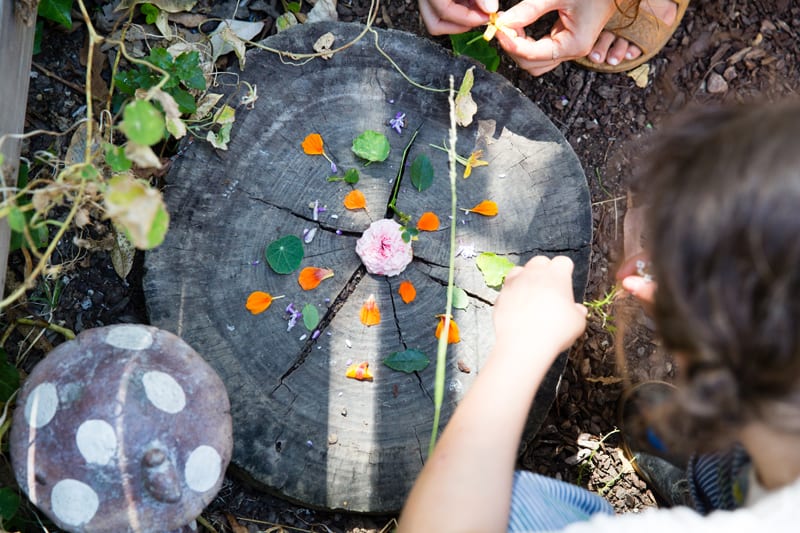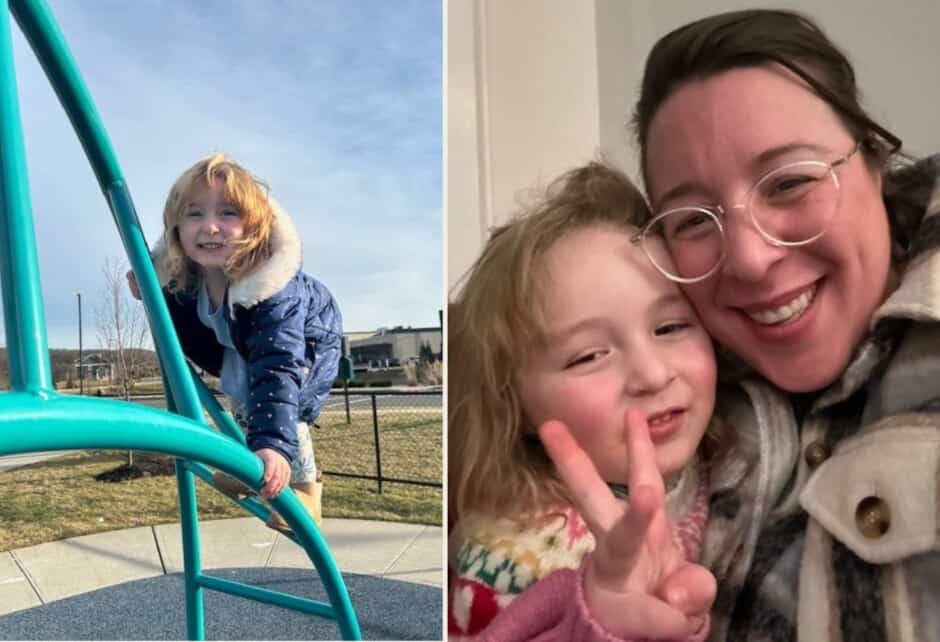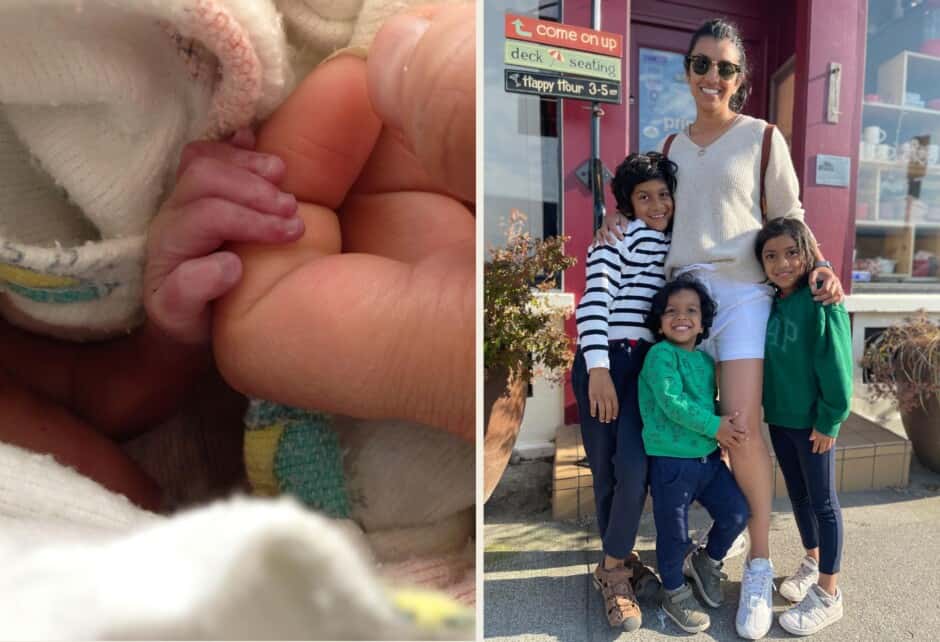
Mom Talk: Outside Play—The Relationship Between Children & Nature
Written by Adina Zerwig
Photography by Shiva Rose, Photographed By Katrina Dickson
We’re back with another round of “Mom Talk”, where we invite some incredible mothers, from all walks of life, to share their personal experiences and journeys through motherhood, whether it be struggles, triumphs, or anything in-between—nothing’s off limits when it comes to topics. This week, Adina Zerwig makes an argument for the importance of letting her kids learn vital life lessons in and through nature. -JKM
My boys scattered across the park as clouds moved in above us like a migrating herd. It was your average tidy park with a tire swing, twisted slide, and monkey bars. Eventually, they lost interest and wandered towards the park’s perimeter, down to where it sloped into a little valley where there were thick, tangled blackberry bushes, woody undergrowth, and of course, mud.
My first instinct was to draw them back to the spot where kids are supposed to play, where it seemed easier and safe. I can become fussy and don’t want to see my kids fall, or have some other weird accident, and engagement with mud is just generally more work for me. And, yet, after reading Richard Louv’s book, Last Child in the Woods, I’ve learned to let go of my impulse to reel them back to structured areas, as I know these small adventures into places of untouched nature are important. Louv writes, “Fear is the most potent force that prevents parents from allowing their children the freedom they themselves enjoyed when they were young. Fear is the emotion that separates a developing child from the full, essential benefits of nature.” Through this book, I’ve learned that children need nature, and nature needs children.
“They’re okay,” I told myself as I watched them inching down the hill. My son touched the blackberry vine before I could reach him. “Ouch,” he said instinctively. “It bit me.” I see his initial offense melt into fascination as he surveys the dark, segmented globes and sharp thorns, strange and beautiful. I remember that according to Louv, interactions such as this one form the relationship children have with nature— a relationship vitally important, yet vastly overlooked for development. In fact, Louv’s book discusses studies that show children who spend more time in nature have a greater sense of intrinsic confidence, a higher ability to focus, and develop advanced fine-motor skills.
So, I take notice when my boys are in nature. Without infrastructure, they are free to create their own play environment. My three-year-old, who is normally very active in small play rooms, actually becomes calmer when outside. There is a methodology to throwing rocks into ponds or letting dirt fall through his fingers, made apparent by the studied look on his face.
Nature isn’t just stimulating, either. It’s also healing and inspiring. Louv writes, “Nature is imperfectly perfect, filled with loose parts and possibilities, with mud and dust, nettles and sky, transcendent hands-on moments and skinned knees.” Yet, fewer children are in nature today. Everything designed for children to play with or on is too structured, too safe. There is no risk, and risk develops confidence and sharpens cognitive decision-making skills. My son did not touch the plant that “bit” him a second time. There was no lesson for me to impart that the blackberry bush did not successfully teach first. Children today are living more sedentary lives, with more screen time, and suffer from what Louv calls, “Nature Deficit Disorder.”
I’ve seen the boundaries shrink at my own neighborhood park. A young boy had successfully climbed a tree planted next to a clean row of perfectly round shrubs. He was around eight and was alone, however, the park was down the street from most of the homes that surrounded it. He looked very pleased with himself, like he had just accomplished a great deal, and to his credit, he had. A lady walking her dog looked miffed as she saw him, and glanced at me as if we would share irritations towards the boy. “Can he do that?”, she said, pausing by the tree as she yanked her dog towards her. I wasn’t sure if she was questioning the boy’s ability or his authorization. I could see fear on the boy’s face as if he was being accused of something. “Apparently, he can,” I said. The woman walked away annoyed. If a boy can’t climb a tree in the park, manicured or not, what is the point of the park?
In the end, Louv’s message is cautious, but still filled with hope, “Alone, parents cannot heal the broken bond. But, each guardian, parent, or other family members can lead the way at home, and within the institutions to which they belong”. Now, before you go drastic and move to a farm, which is what I wanted to do, think about making a few simple adjustments. It’s not always easy to do in the sprawling suburbs where HOA fees come with stringent rules. Nature isn’t served naturally. I had to seek it out the same way I do dentist appointments and preschools.
Then, I bought my kids mud boots and clothes from thrift stores or hand-me-downs, uniforms for serious play. I take them to parks and let them explore, follow them around and see where they go. It took practice on my part, willingness and intentionality to seek out nature for my kids. On the weekends, we make it a point to spend time in nature, exploring a state park or farm. When seeking out nature becomes a priority, it will soon become a lifestyle. Now, we always make it a point to end up somewhere the landscapers do not go.
Are you a mom with something to say? Send us an email to be considered for our “Mom Talk” column.
Share this story



